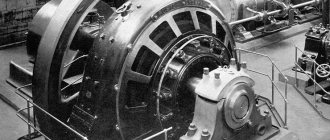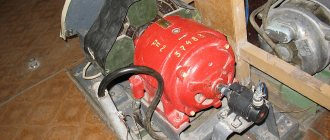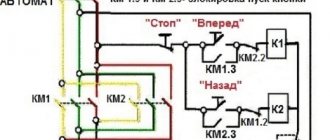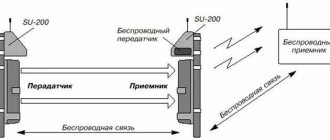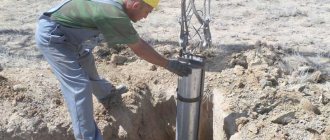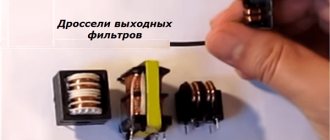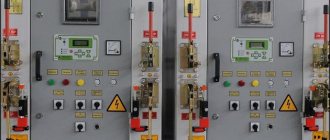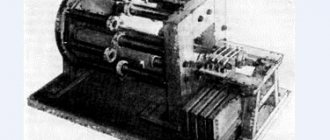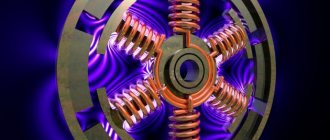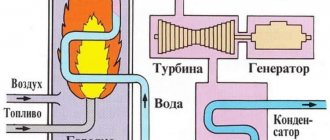The gradual disappearance of fossil fuel sources is forcing scientists to come up with other ways to obtain energy. Despite the fact that wind energy began to be used more than 5,000 years ago, wind farms did not gain popularity there long ago. Everyone knows how people use the wind today - wind power plants, air mills, hang gliding and much more.
Wind energy is a growing industry that specializes in the study and use of wind energy in everyday life. It is considered one of the most promising sectors of alternative energy production.
Every year the construction of wind farms increases, more and more countries are investing in the development and research of wind energy applications. Perhaps in the near future, alternative environmentally friendly sources will fully provide people with energy.
Operating principle of a wind power plant
Wind power plants are several wind turbines interconnected into a single network. Large stations may include more than 100 wind generators. Such places are called “wind parks”. Wind turbines are an environmentally friendly way to produce energy indefinitely.
Effective places for installing wind power plants are areas with a constant flow of wind - hilly areas, mountains, coastal areas of seas and oceans. The following types are distinguished by location:
- ground;
- coastal;
- floating;
- offshore.
By type of construction we can distinguish:
- rotary;
- winged.
Vane wind power plants are the most efficient and are widely used. They are capable of producing sufficient amounts of energy. A three-blade mechanism with a horizontal axis of rotation is most often installed on a high mast. The rotation power depends on the size of the blades. The maximum rotation speed is achieved at the moment when the wind flow is perpendicular to the blades. Since wind flows periodically change direction, there is an automatic control unit
Rotary power plants have a vertical axis of rotation. The advantage of this type is that they do not emit noise, the efficiency of operation does not depend on the direction of the wind flow, so the station does not require additional control units. But compared to impeller power plants, they are less efficient.
The operating principle of any wind power plant is the same. The wind flow spins a rotor with blades that are connected to a generator. The larger the blades, the more flow they capture and rotate at a higher speed. The faster the blades spin, the more energy is generated. The generator converts movement into energy and outputs it to batteries. The output is usable energy.
Global wind distribution
To correctly calculate the installation location of a wind power plant, many factors must be taken into account. Regions with high potential are considered to be places where the average wind speed is about 9 m/s. Such places include Latin America, Greenland, western and northern parts of Europe, central Asia, and central North America.
Assessing wind resources is a complex process. Main factors to pay attention to:
- what winds prevail;
- relief and altitude of the area;
- the presence of reservoirs, vegetation, and various buildings.
Most of the land is not suitable for the location of such stations. The starting speed for generating electricity is 4 m/s. The optimal speed is about 10 m/s.
Criterias of choice
When choosing a wind generator, in addition to technical characteristics, it is also necessary to correctly set the required power. It is set by such a parameter as the diameter of the rotor, which can be calculated using the following formula:
Egod = 1.64 * D2 * O3
Egod – total electricity consumed by appliances at home per year, kW,
D – rotor diameter, indicated in meters,
О – average annual wind speed, meter/second.
By substituting known parameters into this form, it is possible to calculate what diameter rotor a wind power plant for a home should be equipped with in a particular case.
How does the sea or ocean affect the amount of current produced from a wind generator?
For efficient operation of a windmill, not only the strength of the wind is important, but also its constant flow. We all know that wind is the flow of air at the surface of the earth. These flows are formed due to the movement of air from an area of lower pressure to a higher one. Since the earth heats up faster than the surface of the water, the location of wind turbines near seas and oceans creates suitable wind generation - wind currents are always formed here. In addition to the usual ones, there are also storm winds that reach speeds of 20 m/s.
Conducted research confirms that by building wind parks in the seas and oceans, the energy generated by wind turbines could provide all the needs of humanity. In addition, wind speed in the ocean is approximately 70% greater than on land. Although the idea is interesting, its implementation is complex and requires large investments.
Network connection diagram
It is advisable to connect such systems when the power of the wind turbine is high or the power of consumers is quite low. Such a connection allows not only to power electricity receivers from the public grid, but also, in case of excess energy production from a wind power plant (solar power plant or combinations thereof), to sell electricity at the so-called “feed-in tariff”.
Types of wind generators
Wind generators are devices that convert kinetic energy created by wind flow into mechanical, and then into electrical.
All wind generators can be divided into vertical and horizontal. They take their name from the location of the axis of rotation:
Vertical or “carousel” wind turbines
This type of windmill has a mechanism with a vertical axis of rotation. Represents:
- the main rotor, which receives the air flow;
- gearbox;
- generator;
- accumulator battery;
- inverter
Such windmills are silent and can be installed near a residential building; their operation does not depend on the direction of the wind - they are able to capture air flow from any angle, work begins with the minimum wind flow strength.
Horizontal
The rotor axis rotates parallel to the ground. Wind generators of this type have only one blade. They are divided into single-blade, two-blade, three-blade and multi-blade. For the operation of horizontal wind generators, the correct direction of the wind is necessary, so automatic adjustment is thought out.
The advantage of such installations is greater operating efficiency. Compared to vertical ones, they are lighter and smaller in size.
Types and principle of operation of wind power plants
Wind turbines, according to their purpose and type of conversion of wind energy into other types, are divided into: wind-mechanical, wind-electric, wind-thermal and combined (receiving, for example, mechanical and electrical energy). Wind electric installations are the most versatile, for this reason they are most widespread.
From the point of view of autonomy of use, wind turbines differ:
- autonomous;
- working with other energy sources (diesel power plants, photovoltaic installations, etc.);
- operating as part of the power supply system.
Autonomous wind turbines can be used as a source of energy supply, and first of all - power supply to objects remote from power lines (power lines), gas pipelines and other communications.
Considering the variability of wind speed, and often its absence, for continuous power supply, such wind turbines must have batteries of the type of energy that is produced using this installation.
Thus, for wind power plants it is necessary to have an electric battery capable of ensuring an uninterrupted supply of electricity to the facility for at least 2 days.
Wind turbines working with other energy sources make it possible to best fulfill the task of continuous power supply to any objects. Thanks to the presence of a diesel generator, photovoltaic station, mini-CHP or small hydroelectric power station, it is possible to eliminate the need for accumulating the energy produced by wind turbines. At the same time, through the use of wind turbines, savings on traditional fuel are ensured.
When a wind turbine operates as part of an energy system, full use of the energy potential of this installation and savings in other fuel and energy resources consumed by power plants that power the energy system are also ensured.
The main working element of a wind turbine is a wind wheel, which receives wind energy and converts it into mechanical energy of its rotation. It rotates due to aerodynamic forces arising from the interaction of the wind flow and the blades. There are high-speed and low-speed wind wheels. A high-speed wind wheel has a small number of blades, usually two or three.
The interaction of wind flow and blades is shown in Fig. 2.
Fig.2. Plane of rotation of the wind wheel
Vector diagram of forces and velocities in the cross section of a high-speed wind wheel blade:
- υв — wind speed;
- ωR is the peripheral speed of the blade section;
- υп — free-stream velocity;
- R is the radius of rotation of the blade section;
- φ—blade installation angle;
- a is the angle of attack;
- Fa is the total aerodynamic force;
- Fn—lift force;
- Fc is the drag force.
For a section of a blade located at a distance R (radius of rotation) from the center of rotation, at an angular velocity of rotation ω, the linear speed of circular motion (peripheral speed) of the section will be equal to ωR.
The vector of this speed is located in the plane of rotation of the wind wheel. For a given section, the air flow approaches with a relative speed υп, which will exceed the wind speed υв, since it is the sum (vectorally) of υв and the peripheral speed ωR.
The resulting aerodynamic force Fa is decomposed into a lift force Fп, which creates a torque in the direction of the peripheral velocity vector ωR, and into a drag force Fc, acting against the direction of rotation of the blade. By changing the installation angle of the blade φ by rotating it, you can change the magnitude and direction of the force vectors acting on the blade.
This achieves regulation of the rotation speed of the wind wheel, limiting its power, as well as starting and stopping the wind engine.
The power (kW) developed on the wind wheel shaft can be approximately determined by the formula:
Rvk = 3.85∙10-4∙р∙D2∙υвЗ∙Kisp
Where:
- p—air density, kg/m3;
- υв — wind speed, m/s;
- D—diameter of the wind wheel, m;
- Kisp is the coefficient of wind energy utilization.
The limiting value of Kisp for a high-speed ideal wind wheel was determined by the Russian scientist N.E. Zhukovsky and is equal to 0.593.
From the formula it is clear that Rvk is proportional to υв3, which determines the need to regulate the speed of rotation of the wind wheel to ensure constant developed power.
A low-speed wind wheel can be structurally made in the form of blade wheels, with the number of blades from 6 or more. In addition, there are developments of low-speed wind turbines of the carousel, drum, sail types, etc.
The Kisp value for multi-bladed wind wheels does not exceed 0.38, for a rotary wind turbine - less than 0.18.
A feature of all low-speed wind turbines is that they develop a large torque at a low rotation speed.
Regulating the rotation speed and limiting the power is achieved by turning the axis of rotation of the wind wheel from the direction of the wind, reducing the area of the working surfaces of the wind wheel, etc.
Depending on the orientation of the axis of rotation of the working body (wind wheel, rotor, etc.), wind engines are divided into horizontal and vertical-axial.
Horizontal-axial ones are those in which the axis of rotation of the wind wheel is located along the direction of the wind flow. For normal operation, such wind turbines require setting the plane of rotation of the wind wheel perpendicular to the wind speed vector.
Vertical-axial ones have an axis of rotation of the working body located vertically relative to the horizontal plane. These devices do not require installation in the wind.
How does a wind power plant work?
Modern wind farms have 3 blades, the length of which can reach 55 meters.
To understand how the station works you need to know how it works:
- Wind generator. Its main task is to convert energy into electricity. Consists of a propeller and an alternator.
- Controller. Converts alternating current to direct current and regulates the speed of the wind generator.
- Batteries store energy while the windmill is running.
- An inverter converts direct current into household current, which is supplied to the house for use.
Features of household wind generators
Since wind energy is an inexhaustible resource, many people are thinking about installing a wind turbine at home. Previously, wind generators were used more in the industrial sector. But with the development of this technology, household models also appeared.
Most often they are used in places where there is no centralized power grid. Modern installations with 3-5 generators can fully provide the house with energy. However, before buying windmills, it is worth studying how efficiently they will work in a particular area.
Note! On the market you can find a wind-diesel power plant (WDP), which is a combination of wind-electric installations and a diesel generator. In addition to electricity, the VDES can also produce heat, which allows uninterrupted supply of energy to the house.
Capacity of industrial stations
Wind energy as an industry relies on the use of powerful industrial wind turbines that can provide energy on a large scale. All wind generators have a similar design:
- support tower or mast;
- gondola
- turbine generator.
The dimensions of such stations can reach a height of up to 190 meters and weigh up to 6000 tons. One of the largest units in the world, Enercon E-126, has a blade span of 128 meters.
Calculation of a bladed wind generator
The power of the device can be calculated using the following formula:
P=0.6·(¶r2)v3 where,
P – design power, kW;
r – distance from the central point of the rotor to the end of the blade, m;
v – average speed, m/s;
¶=3,14.
Of great importance in design is the size of the blade, shape, and material from which it is made.
Multiplier calculation
The most powerful rotor can produce about 400 revolutions per minute, but for effective operation, the number of revolutions must be 2.5 times higher. For this purpose, multipliers are installed - intermediate links between the rotor and the generator, which increases the shaft speed. To ensure efficient operation of the generator, you need a multiplier with a large increase factor.
Mast
The mast is one of the most important design elements of a wind generator. The height of the mast depends on the installation location. Basic installation rules:
- The wind generator mast should be located no closer than 150 meters from plantings and residential buildings, and preferably at a distance of 2.5 kilometers.
- The lower edge of the blade should be no lower than 10 meters from the top of the trees.
In order for wind generators to operate at full capacity, the minimum installation height starts at 25 meters. Most often the mast height is 70-110 meters
Based on the type of support there are:
- on stretch marks;
- conical;
- welded;
- hydraulic.
The mast is installed on a foundation on which the reliability of the structure depends. To begin with, dig a pit and lay crushed stone and sand in layers. After compaction, the base of the mast is installed and filled with concrete. After pouring, the foundation needs time to settle for 4-5 weeks. Only after this the work on installing the mast continues.
Vertical wind generators have a different design. They do not require high supports, and the mast is a collapsible structure up to 6 meters high, which is mounted on the roof of buildings.
Wind energy calculation
Wind energy is the kinetic energy of air flow. This indicator is measured in joules. It can be calculated using the following formula:
P = r · V3 · S/2, where r is the air density indicator (1.225 kg/m3), V is the value reflecting the speed at which the flow moves (m/s), S is the flow area (m2).
When calculating, it is important to take into account the losses and efficiency of the generator.
To get accurate results, you need to know the terrain indicators. Where is the wind generator supposed to be installed?
Legal Requirements
In order for a wind generator installed on a private house or adjacent territory to be consistent with the legal framework, it must meet the following series of requirements:
- Power is not higher than 5 kW. Equipment with this indicator refers to household devices that do not require control by energy regulatory institutions.
- Absence of municipal-territorial and technical restrictions on the occupied area. Some private territories may be located inside specially protected, rare natural or other status objects, within which the placement of certain technical equipment is prohibited.
- Coordination with neighbors (interference, noise, falling shadow, etc.). All types of interference that arise from the installation can cause complaints not only from neighbors, but also from nearby enterprises and transmission centers.
- Mast height to meet local and federal requirements. The height of the mast usually does not exceed 15 meters, but there may be exceptions. Therefore, before constructing a tall structure, you need to make sure that it meets all the necessary requirements - no power lines, away from the airport landing line, etc.
Windmill on the facade of a private house Source more-el.com
- No disturbance to local or migratory species. Birds often get caught in the blades of power plants. Therefore, the choice of location for installing a mast with a propeller should exclude previously known flight paths.
Recommendation! To exclude all possible claims from neighbors or regulatory authorities, it is better to collect in advance all the necessary documents, technical passports and certificates confirming that a wind turbine for a private home is safe and harmless. In addition, it is better to install the factory model in full accordance with the parameters recommended in the technical documentation.
False theories
The most common myths about wind energy:
- Windmills kill birds. It’s hard to deny that birds sometimes crash into the blades or mast of a wind turbine and die. But just as many birds are killed by electrical wires. According to statistics, most birds die due to cat attacks.
- The most common false theory is that the noise from a wind generator can negatively affect human health, including complications with the hearing organs.
- Not an environmentally friendly source, since the increase in the number of wind farms increases carbon dioxide emissions. Yes, but compared to coal or gas power plants, this figure is 50 times less.
- Unemployment. There is a belief that generating energy this way will eliminate jobs, but this myth is easy to dispel. Unemployment cannot arise in any developing sector, since wind energy always needs new personnel - researchers, developers.
False theories appear due to ignorance of the topic, but all of them are easy to refute, which has been done many times.
Wind power plants advantages and disadvantages
Advantages of installing wind power plants:
- Environmental friendliness. Today this factor plays a big role. And energy production using wind turbines is an environmentally friendly method that does not affect the surrounding nature in any way.
- Economical. Compared to other sources of energy, wind power plants are much more economical to construct.
- An endless source of energy.
- Operating efficiency - the power plant produces 80 times more energy than it consumes.
- Location. The wind turbine can be placed anywhere, unlike traditional stations.
- Modern wind turbines can operate at speeds of 3.5 m/s.
- Technological development.
Disadvantages of wind energy:
- The operation of a wind turbine depends on the strength of the wind flow, which may not exist.
- Changing the landscape of the area due to the construction of wind parks.
- Costs of searching and studying the area for wind turbines and their construction.
- Plant turbines create low-frequency noise that has a negative impact on humans.
- Poses danger for birds.
- Less productive compared to other stations.
Wind energy has its supporters who believe that the use of wind generators is an environmentally friendly way to solve the energy problem. But there are also people who oppose the construction of wind parks, as they are harmful to human health and birds. The disadvantages of wind energy are not comparable to the great potential that lies in this industry.
Specifications
The main technical characteristics of wind turbines include:
- rated power of the device,
- minimum wind speed at which the rotor starts,
- the maximum wind speed at which braking of the rotating part is required.
In addition to these parameters, it is important to determine the payback period of the device, its durability and maintenance costs. These factors are decisive when choosing a power supply source between diesel stations and wind turbines. For regions with weak winds, this choice is very relevant, since investing in a obviously ineffective complex is irrational and does not contribute to solving the problem.
Wind power plants are a promising option for solving the problem of energy supply for backward regions. With a competent approach and the use of the optimal set of equipment, it is possible to create both small stations that supply individual residential buildings, and larger installations that can supply energy to populated areas.
The ability to produce energy without damaging the region’s ecology should be a top priority, and wind energy in this regard is the most successful option for solving problems.
Wind energy as a threat to wildlife
Bird advocates oppose the construction of wind turbines because birds often crash into wind turbine blades. Although calculations have shown that the number of birds killed by the generator is no more than by high-voltage wires. However, animal rights activists are worried that during the migration of birds they may end up in the wind park area or change their migration route.
Another concern of defenders is that the noise that the generators make can scare away animals and they change their habitat.
Wind energy as a potential oncogene
“Wind generator syndrome” is the clinical name for symptoms of people who live near wind turbines. The main symptoms are fatigue, insomnia, irritability, headaches, tinnitus, problems with concentration. All these symptoms may appear due to the fact that the operation of the generator produces low-frequency noise that our hearing does not perceive, but our body reacts.
This syndrome is not officially recognized, and some consider it a classic case of nocebo effect. This means that the body’s reaction is caused not by the actions of the generator, but by negative information about it.
Wind power in Russia
At the moment, Russia uses such a resource as wind quite poorly. The government does not provide enough subsidies for the research and purchase of structures.
The largest wind power plant in Russia was launched in 2020 in the Stavropol Territory. The operating power of each of the 84 installations is 2.5 MW.
The share of wind energy in the country's overall energy system is insignificant, and most likely will not change in the near future. Over the past year, wind turbines generated less than 1% of the total energy consumed. This is due to the fact that other methods of energy production have been developed in the country. However, we must remember that wind energy is inexhaustible and we cannot refuse an alternative and fast-growing industry.
Wind power plants - geography of application
Wind power plants are used in countries with suitable wind speeds, low terrain and a shortage of natural resources. The world leader in the use of wind power plants is Germany, which has built ~9000 MW of power in a short period of time.
The unit capacity of wind power stations increased to 3 MW. Intensive construction of wind power plants continues in Germany. Wind power production has become a significant part of Denmark and Germany's exports.
Wind power production provides jobs for 60,000 people in Europe. Resolutions have been adopted at the state level abroad to promote the introduction of renewable energy sources.
Wind power in the world
Wind energy is an alternative source of energy and many countries use it. The study of wind energy has become a popular and rapidly growing field in recent decades. Last year, 93 GW of new installations were installed.
The leading countries where much attention is paid to this are the USA, Canada, Great Britain, Denmark, Germany, and China.
It should be noted! Wind energy is being used by people more and more often, for example, the share of energy received in Denmark is 28% of the entire energy industry, in China it is 36%.
The outlook for wind energy development remains positive, and in the near future the number of countries that will introduce an alternative method of energy production will only increase.
Development prospects
If we take into account that there is now a focus on natural environmental methods of energy extraction, then wind energy will have a positive development outlook in the coming years. New and improved models of wind turbines are being developed all the time. One of the latest developments is floating generators that can harness the maximum power of the wind.
More and more countries in the world are paying attention to wind energy and are starting to build their own wind turbines in suitable areas. Wind energy is considered one of the most promising alternative energy sectors.
More often in demand are private wind generators, which can provide part or all of the house with energy. Traditional energy sources may soon run out and also cause irreparable harm to the environment. Many people believe that wind energy, as well as alternative environmentally friendly methods of energy production, is the future.
Design Features
The main feature of the wind turbine design is the presence of a movable rotor that transmits torque to the generator. This unit is the most critical in the entire structure, requiring high-quality manufacturing, strength and resistance to loads.
In addition, in addition to reliability, the rotor must react quite sensitively to contact with wind currents and begin rotating at relatively weak values. This is especially important if we take into account the climate of Russia, where weak and medium winds predominate. The ability to start in low winds is highly valued among wind generators; most developments are created specifically to increase sensitivity to low flows.
Instability and low wind speeds are the main reasons for the insufficient development of wind energy in Russia. Costs for alternative sources of electricity supply are often higher than for traditional methods, which explains the low presence of wind turbines. At the same time, solving the issue with the help of diesel power plants contributes to a negative impact on the environment in the form of emissions of fuel combustion products.
The use of free wind energy, with properly allocated investments and the use of the most efficient designs, can provide significant economic benefits and can solve the problem for regions with insufficient energy supplies.
